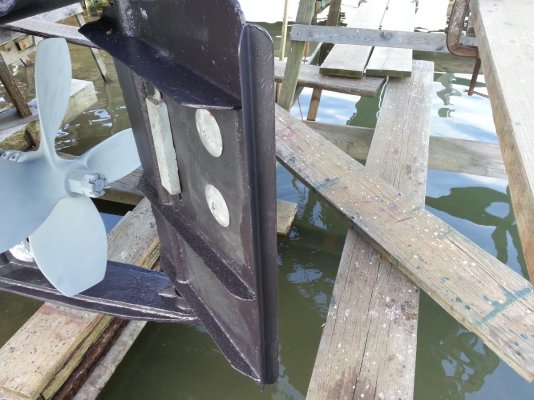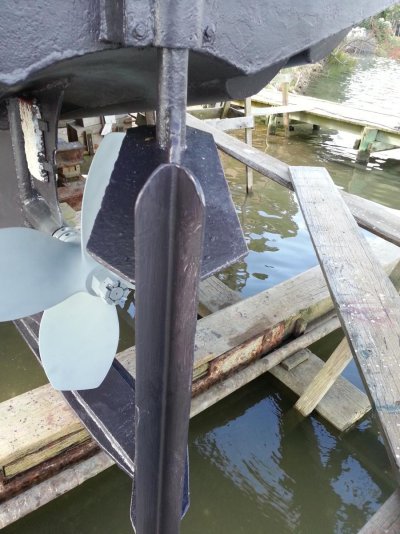what_barnacles
Guru
BeeJay,
Pretty interesting that you got some stern lift from the mod. Got any pics?
Pretty interesting that you got some stern lift from the mod. Got any pics?
If your rudder is ss, your aluminum plates will disappear through galvanic corrosion.


Our big 45 degree rudder leaves me not in want of anything else.
That's the kindest thing that somebodies said about my rear end in a long time .....gosh thanks Murray (blush blush)

rudder porn!if you want great slow speed turning, the 3 components to success are:
A large rudder.
A significant leading edge (up to 28% of what's behind the pivot point, put in front of the pivot point). Without a leading edge, you lose half of the prop wash.
Being able to pivot the rudder 40 degrees.
This is the rudder on my trawler. It's a foil style, designed for slow speed. There is a significant leading edge and it will pivot 40 degrees. You can push this boat sideways by pivoting the rudder hard over, going forward at idle and pushing the bow with the bow thruster. There is an incredible amount of sideways push with this rudder hard over!
View attachment 80730
View attachment 80731
this is the rudder we built for my bruno & stillman. Large leading edge and 40+ degree pivot. This boat turns on a dime and gives you a nickel back.
View attachment 80732
ted
The million dollar question...
How big of a fishtail to improve turning but small enough to be insignificant drag at cruise?
Our big 45 degree rudder leaves me not in want of anything else.
Type thistle rudder on YouTube and look for the green boat. I can travel at full speed turn the rudder over and make 180 turn in 30 ft circle with maybe 5 ft of forward progress.
Yup. Pretty dang impressive!
Irresponsible joy-riding within a marina. Don't want that guy anywhere near my berth.
The main purpose of the leading edge of the rudder, the bit in front of the post, is to lower the effort needed to turn the rudder. My mod lowered vibration in the rudder, has no effect on cruise speed and improved my low-speed handling immensely. It’s up to you to decide if “immensely” means anything.
